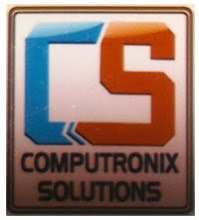Collective: The up and down control. It puts a collective control input into the rotor system, meaning that it puts either "all up", or "all down" control inputs in at one time through the swash plate. It is operated by the stick on the left side of the seat, called the collective pitch control. It is operated by the pilots left hand.
The collective lets you change the angle of attack of the main rotor simultaneously on both blades.
Cyclic: The left and right, forward and aft control. It puts in one control input into the rotor system at a time through the swash plate. It is also known as the "Stick". It comes out of the centre of the floor of the cockpit, and sits between the pilots legs. It is operated by the pilots right hand.
The cyclic changes the angle of attack of the main rotor's wings unevenly by tilting the swash plate assembly. On one side of the helicopter, the angle of attack (and therefore the lift) is greater.
Pedals: These are not rudder pedals, although they are in the same place as rudder pedals on an airplane. A single rotor helicopter has no real rudder. It has instead, an anti-torque rotor (Also known as a tail rotor), which is responsible for directional control at a hover, and aircraft trim in forward flight. The pedals are operated by the pilots feet, just like airplane rudder pedals are. Tandem rotor helicopters also have these pedals, but they operate both main rotor systems for directional control at a hover.
Here are some of the component parts that make up a helicopter. While this is an example of one specific helicopter (UH-1C), not all helicopters will have all of the parts listed here. Some of this may be a bit more of the same old stuff we have just discussed, but it will show everything as it relates to everything else on the aircraft and the location of each component. Just mouse over the grey spots to see the explanation of the parts of the helicopter below.
The Tail Rotor
The tail rotor is very important. If you spin a rotor using an engine, the rotor will rotate, but the engine and the helicopter will try to rotate in the opposite direction. This is called TORQUE REACTION
The tail rotor is used like a small propeller, to pull against torque reaction and hold the helicopter straight.
By applying more or less pitch (angle) to the tail rotor blades it can be used to make the helicopter turn left or right, becoming a rudder. The tail rotor is connected to the main rotor through a gearbox. When using the tail rotor trying to compensate the torque, the result is an excess of force in the direction for which the tail rotor is meant to compensate, which will tend to make the helicopter drift sideways. Pilots tend to compensate by applying a little cyclic pitch, but designers also help the situation by setting up the control rigging to compensate. The result is that many helicopters tend to lean to one side in the hover and often touch down consistently on one wheel first. On the other hand if you observe a hovering helicopter head-on you will often note that the rotor is slightly tilted. All this is a manifestation of the drift phenomenon.
Saturday, February 13, 2010
Subscribe to:
Post Comments (Atom)

No comments:
Post a Comment